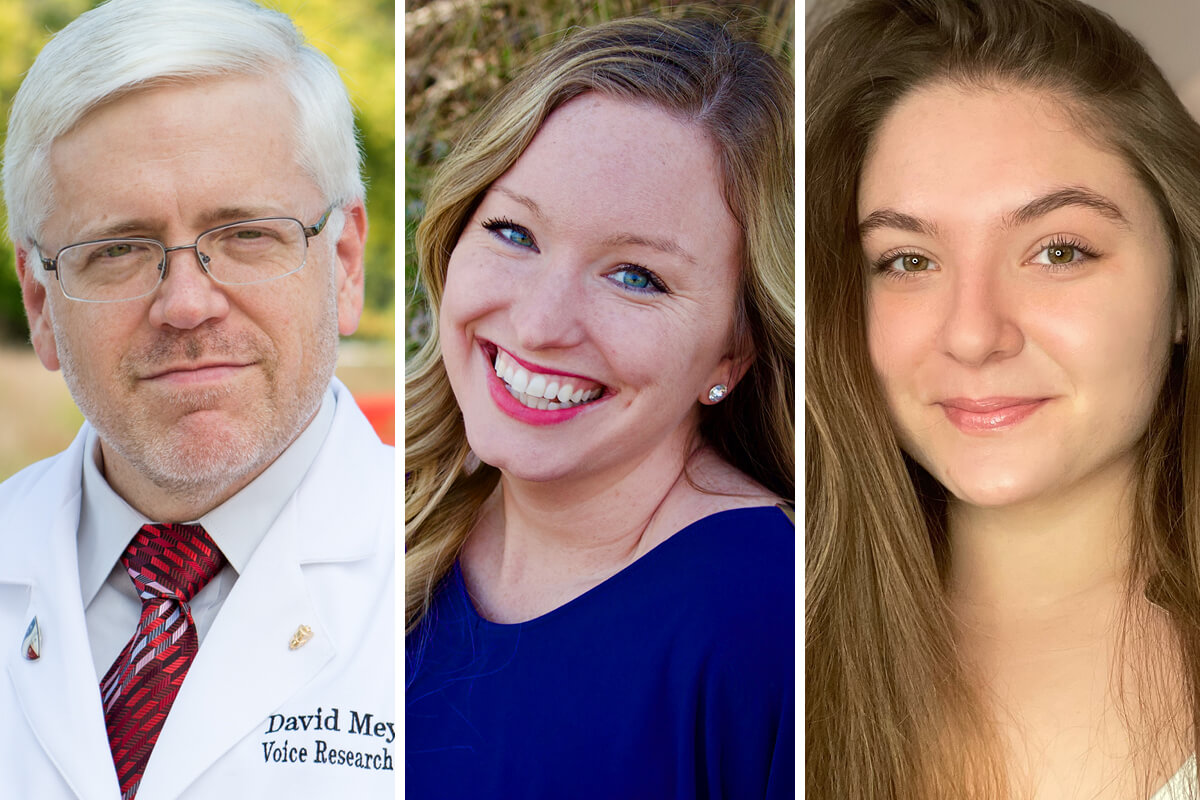Several Shenandoah Conservatory students and faculty collaborated on biomedical research that was selected by the International Society for Magnetic Resonance in Medicine (ISMRM) and International Society for MR Radiographers & Technologists (ISMRT) to be presented at the 2023 ISMRM & ISMRT Annual Meeting & Exhibition in Toronto, Ontario, Canada, from Saturday, June 3, through Thursday, June 8. In the world of music, singers are unique: they play instruments that are biological and invisible. Shenandoah University offers graduate students world-class training and research opportunities in the anatomy and physiology of the voice.
Two recent research papers were selected for presentation in an in-person oral scientific session. These were collaborations by students and faculty of the Janette Ogg Voice Research Center at Shenandoah University, members of Dr. Sajan Lingala’s biomedical engineering lab at the University of Iowa and Dr. Brad Story of the University of Arizona.
“Volumetric vocal tract segmentation using a deep transfer learning 3D U-NET model” was co-authored by Katie Burnham ’23 (Doctor of Musical Arts in Performance – Voice), Rachel Balbi ’23 (Master of Music in Performance – Voice) and Director of the Janette Ogg Voice Research Center and Associate Professor of Voice (Baritone) and Voice Pedagogy David Meyer, D.M. In this research, Meyer, Burnham and Balbi segmented 50 MRI scans of vocal tracts of healthy French speakers. Dr. Lingala and his lab used the resulting 3D segmentations to “teach” a convolutional neural network (U-NET), to develop an accurate automated vocal tract segmentation tool.
“Synthesizing speech through a tube talker model informed by dynamic MRI-derived vocal tract area functions” was also co-authored by Dr. Meyer. In this paper, cross-sectional areas of the vocal tract were calculated from dynamic MRI scans of healthy speakers. These MRI-derived vocal tract area calculations were then input into “Tube Talker,” an area-function based speech synthesis algorithm. This method allowed the comparison of speech samples from “Tube Talker” (in silico) with the speech captured in dynamic MRI (in vivo).




